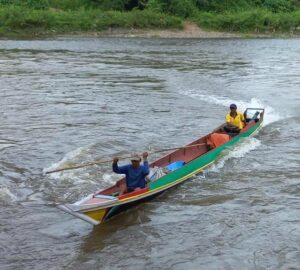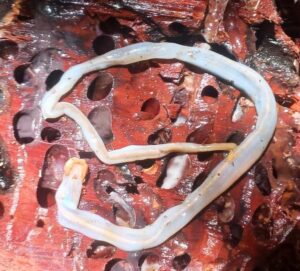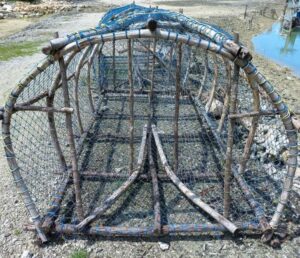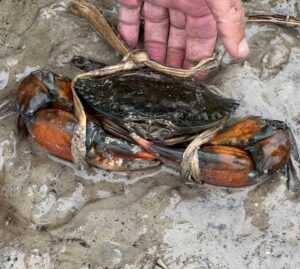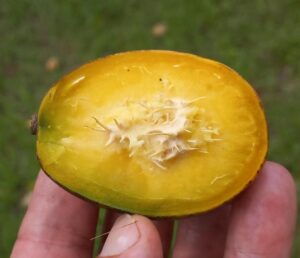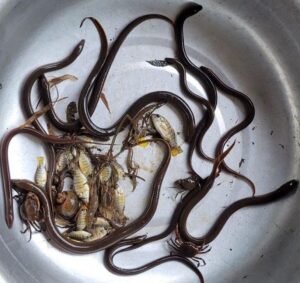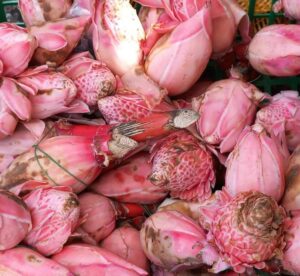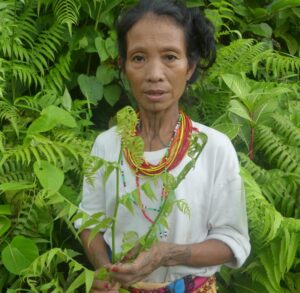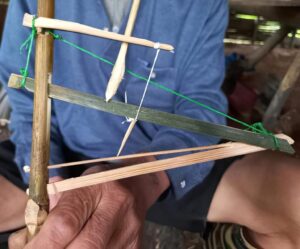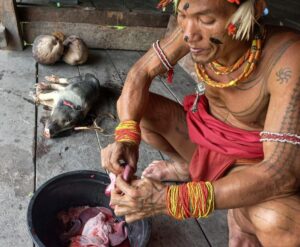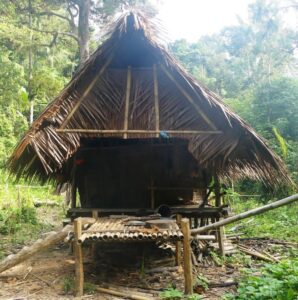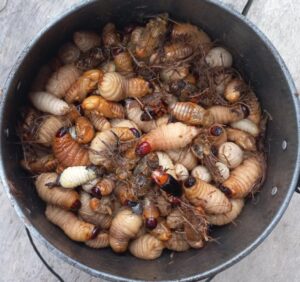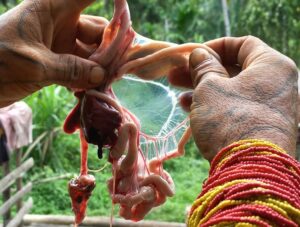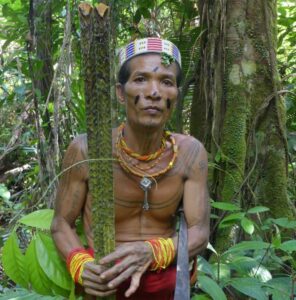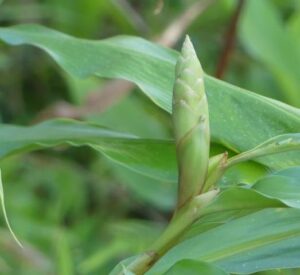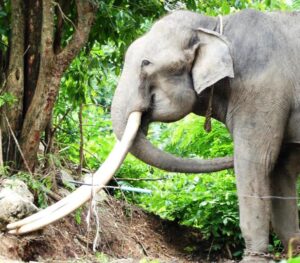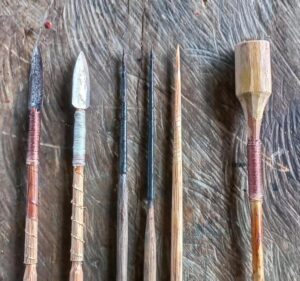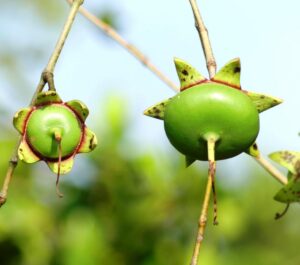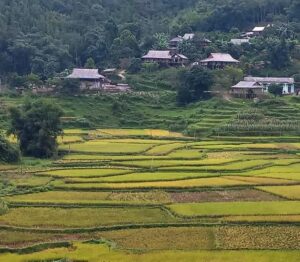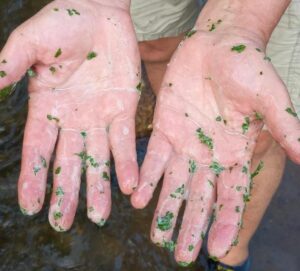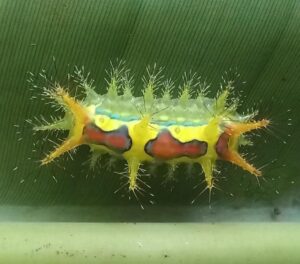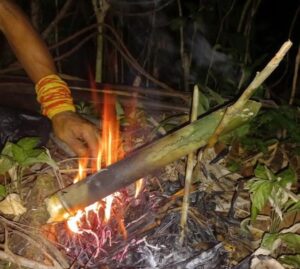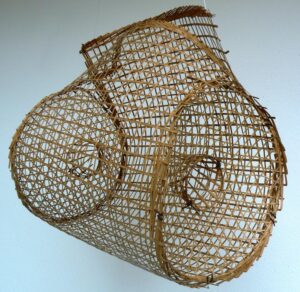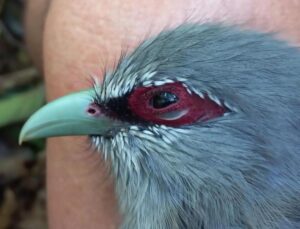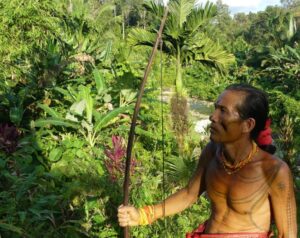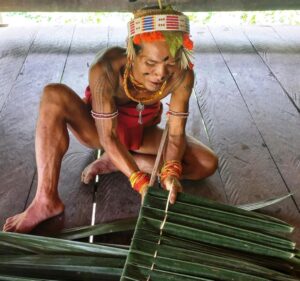South-East Asia
Orang Rimba shelters in the forests of Sumatra
Orang Rimba shelters and dwellings in the forests are designed in different styles rooted in their semi-nomadic lifestyle. These structures can be divided into two main groups: semi-permanent structures and shelters when they are on the move. The author visited…
Visiting Orang Rimba people in Jambi province
Who are the Orang Rimba people? The expression ‘Orang Rimba’ means ‘People of the rainforest,’ but this name is primarily used by scientists internationally. In Indonesia, common people call them ‘Kubus,’ which means being outside or on the fringe of…
Harvesting Asian honey bees in a rock crevice
Asian honey bees and their combs are a special treat for the local population of backcountry areas at Pu Luong Nature Reserve in northern Vietnam. The harvested honey is seldom sold and is mainly used by the villagers. The grubs,…
Harvesting Shipworms in a Thai Mangrove Forest
Edible shipworms, in this case Bactronophorus thoracites, are also known as Naked clams, Priyang talay (เพรียงทะเล), and various other common names throughout the region where they occur. They bore into wood immersed in salt water and are a major hassle…
Collecting Pipi clams at Rawai Beach
Pipi clams (Donax deltoides) are also known as Surf clams, Sandy Donax, and a wide range of other common names. In Thailand, they can be found on most beaches in the Gulf of Thailand and the Andaman Sea. They are…
Bottom fish traps of the Urak Lawoi people
The following information was gathered from a Urak Lawoi man who has lived in the Rawai Beach Sea-Gypsy Village for 27 years. He was 57 years old and only had one tooth (incisor) left in the middle of his upper…
Rectangular squid traps in Thailand
Rectangular squid traps are used in the Gulf of Thailand and along the coastline of the Andaman Sea in the same way as semi-circular traps. Both types are primarily used for catching Bigfin reef squid (Sepioteuthis lessoniana) but will also…
Catching mud crabs at Koh Lanta
Mud crabs are common in mangrove areas in Thailand. They are primarily caught in crab pots for commercial purposes. However, my Urak Lawoi friends and I specialized in digging up and catching these crabs by hand. Who are Urak Lawoi…
Red-tailed pipe snake
The ‘Red-tailed pipe snake’ (Cylindrophis ruffus) was recently renamed ‘Jodi’s pipe snake’ (Cylindrophis jodiae), which we are talking about here. It is called a ‘Pipe snake’ because it has a round, pipe-like body. The lower end of the body can…
Ambarella fruit in the Mekong Delta
Ambarella fruit (Spondias dulcis Parkinson; syn.: Spondias cytherea) is native to Melanesia and Polynesia and was introduced worldwide throughout the tropics. Its other common English names are Jew plum and Golden apple. In the Mekong Delta, it is omnipresent in…
Trapping eels in Northern Vietnam
Trapping eels is a simple way for rice farmers in the catchment area of the Red River in North Vietnam to provide themselves with animal protein. No special skills are required, as with angling or net fishing. The activity is…
Edible rock snails in limestone areas of Vietnam
Rock snails of the genus Cyclophorus are highly sought-after wild foods in rocky limestone mountain areas of Vietnam. These snails are not only regarded as food but also as medicine against various ailments. The local Vietnamese name is Ốc thuốc,…
Blowpipe hunting with Orang Asli people in Malaysia
Blowpipe hunting is still prevalent in many Orang Asli communities in Malaysia. Although the government strictly enforces hunting rules and regulations, it is practically impossible to supervise all the remote small hamlets and villages. On the other hand, it is…
Ginger flowers add zest to food
Ginger flowers are eaten in many Southeast-Asian cultures. In Indonesia, most ginger varieties are known from Siberut Island. The native population of this island has utilized the flowers of Torch Ginger (Etlingera elatior (Jack) R.M. Sm.) since ancient times for…
Young Cassava Leaves provide protein and micronutrients
Young cassava leaves are a regularly eaten side dish for Mentawai people. Cassava (Manihot esculenta, Crantz) is endemic to the southern rim of Amazonia in South America. There, it was domesticated at around 5000 BC. In the 16th century AC,…
Vegetable ferns are a source of nutrients in Siberut
Vegetable ferns (Diplazium esculentum (Retz.)) are among the few wild vegetables Mentawai people in the forests eat regularly on Siberut Island. By Mentawais, they are called ‘Laipat.’ Other wild vegetables are cassava leaves, ginger flowers, taro stalks, and wild eggplants….
Scissor Traps of Thái Đen tribals in Vietnam
Scissor traps are universal traps that can catch all kinds of small rodents. They are easy to produce from bamboo but need one item to be sourced in the villages. These are strips of bicycle tubes, which are not easy…
Bow Traps of Thái Đen tribals in Vietnam
Bow traps are used by Black Thai tribal people in Northern Vietnam to catch small rodents. These ingenious devices are carved from pieces of bamboo and some strings. The closing force of the scissor comes from a bow-like structure above…
Domestic pigs as food by Mentawais
Domestic pigs are a typical gift from a Mentawai family to a shaman for his support or services. In our case, Aman Aru attended a ceremony in a neighboring Uma (family home in the forests), which had to be cleaned…
Deadfall Traps of Thái Đen tribals in Vietnam
Deadfall traps with a Figure-4 trigger are essential knowledge for survivalists and bushcrafters worldwide. Thái Đen (Black Thai) tribal people at Pù Luông Nature Reserve in Northern Vietnam use these traps and the Figure-4 trigger in a modified version. Modifications…
Mentawai forest huts
The Mentawai people at Siberut Island use forest huts (called Sapou by them) for various reasons and purposes. One is a permanent dwelling for single, old men who do not live with their family in the Uma (family home in…
Rattan fruits in Siberut jungles
Rattan fruits are available throughout the year in all Southeast Asian rainforests. There are about 600 different species of rattans, and many of them bear edible fruits. However, rattan prickles are a common nuisance when walking in the jungle. Nevertheless,…
Carrying baskets of Mentawai people
Two types of carrying baskets were used during my stay with the Mentawai people at Buttui on Siberut Island. One, locally called Opa, was fully enclosed on the sides and had an open rattan bottom. The other type was entirely…
Cutting tools at Siberut Island
The cutting tools of Mentawai people living in the forests are adzes, axes, machetes, and one specialized knife. All these tools have a solid historical background and are still used today. During my stay with a Mentawai family in December…
Sago worms of an unidentified species at Siberut Island
Sago worms are one of the food items that come naturally with the Mentawai’s staple food of sago flour. The worms grow in felled palm trunks or destined saplings. They are not worms but larvae and pupae of the Palm…
Domestic chicken as food by Mentawais
Domestic chickens are omnipresent around every Uma (family home) in the forests of Siberut Island. During nighttime, they will be kept in closed coops to protect them from predators like civet cats. While staying with Mentawais, I observed no nesting…
Rattan leaf stalks for coconut grating
Rattan leaf stalks have been, since immortal times, the tools with which Mentawai people have been grating coconuts. These long-lasting tools grate the coconuts into the required size of flakes. When worn out or broken, a new one will be…
Taro – another staple food of the Mentawai people
Taro (Colocasia esculenta (L.) Schott) is one of the three staple food items of the Mentawai people on Siberut Island in Indonesia. The other two are sago and bananas. In many other countries, taro leaves and corms are eaten. Mentawais…
Roasted Sago sticks on Siberut Island
Roasted sago starch is the staple food for Mentawai people living in the moist, tropical forests of Siberut Island, off the coast of Western Sumatra in Indonesia. On the other hand, sago boiled to porridge, is eaten as a staple…
White Ginger Lily for cleaning hands
White Ginger Lily (Hedychium coronarium J. Koenig) belongs to the Zingiberaceae (Ginger) botanical family. Mentawai people use the crushed stem to clean their hands after touching arrow poison or one of its two poisonous main constituents. Plant description The Missouri…
Danger of Asian elephants – whether they are in musth or not
Asian elephants (Elaphas maximus) are smaller than their African cousins but not less dangerous when in musth. That danger was already described for African elephants in this article on this website. In the following, we briefly compare the differences between…
Mentawai arrow poison
The Mentawai people use poison on their arrows to hunt game. In previous articles on this website, we discussed the Mentawai people’s hunting methods. Then, we presented an actual hunt for Flying foxes. We then discussed the longbows used on…
Hunting arrows and quivers of the Mentawai people
Bows and arrows are the primary hunting weapons used by the Mentawai people. Their bows were already described here. This article will explain the different types of arrows used for these bows and give an insight into the quivers used….
Mangrove apples at the Mekong Delta
Mangrove apples are the fruits of Sonneratia sp. trees, one of the important genera of trees in the Mangrove forests of Southeast Asia. All species of Sonneratia will develop edible Mangrove apples. These fruits are slightly different in shape, orientation…
Animal species collected by rice farmers in the Red River Delta
Rice farmers in secluded areas of the Red River Delta in Northern Vietnam need dietary additions to their staple rice dishes. Vegetables are harvested from around their homes and surrounding tropical Evergreen forests. Animal proteins are mainly collected in and…
Natural shampoo from a Soap plant (Gouania leptostachya)
Natural shampoo can be extracted from a variety of plants worldwide. In Lowland evergreen forests in Northern Vietnam, we used the leaves of a so-called Soap Plant. With these leaves, we regularly washed our hands and bodies. In the following,…
Building a specialized fishing boat at Padang
In Indonesia, there exists a wide variety of traditional fishing boat designs. Most of them are variations of standard types, which were adapted to local needs and conditions. And many of them are not systematically described yet. This article tries…
Stinging Nettle Slug Caterpillar in Vietnam
When hiking in Pu Luong Nature Reserve in Northern Vietnam, we found a species of Stinging Nettle Slug Caterpillar on a Banana leaf. My local friends got highly nervous when seeing it and I was intensely warned against touching it….
Boiling water in bamboo
Boiling water in green bamboo stems (‘culms’ would be the botanically correct term) is not a big skill, but it represents the basic cooking technique in Southeast Asian forests. One of the following articles will build on that and will…
Trapping Snakeskin Gourami in the Mekong Delta
Trapping Snakeskin Gourami fish (Trichopodus pectoralis) is commonly done all over Southeast Asia. However, a specific trap for catching them was developed in the Mekong Delta in Vietnam. Its simple principle could be easily applied to many other areas of…
Green-billed Malkoha bird on the spit
The Green-billed Malkoha is a common bird in Vietnam’s semi-deciduous tropical forests. An expedition led to the capture of one who was cooked for lunch. This and other species are often hunted by villagers supplementing their diet with this and…
Catching Octopuses by Sea-Gypsies
Sea-Gypsies – Urak Lawoi, Moklen, or Moken – traditionally catch octopuses along the Andaman Sea’s rocky shores. Using a metal skewer and baited bamboo stick, they locate octopuses in holes with foam or clean pebbles. Patiently baiting them, they impale…
Mentawai Hunting bows
Hunting bows are the main hunting weapon for the Mentawai people and are very personal items for a hunter. They have great skills in using them and practice shooting from childhood onwards. During my stay with the Mentawais, I looked…
How Mentawai people assemble roof thatching panels
Roof thatching is vital for shelter waterproofing in the Mentawai tribe of around 6,000 people on Siberut Island, Indonesia. Siberut lies about 100 miles (160 km) west of Padang in West Sumatra. Of the 6,000 Mentawai people, roughly 1,000, mainly…
Squid traps in the Gulf of Thailand
Squid is a main source of income for many fishermen in villages around the Gulf of Thailand. Because fish are becoming increasingly rare, whereas Cephalodoans maintain their population. Only certain types of finfish are sold profitably, and the rest are…


